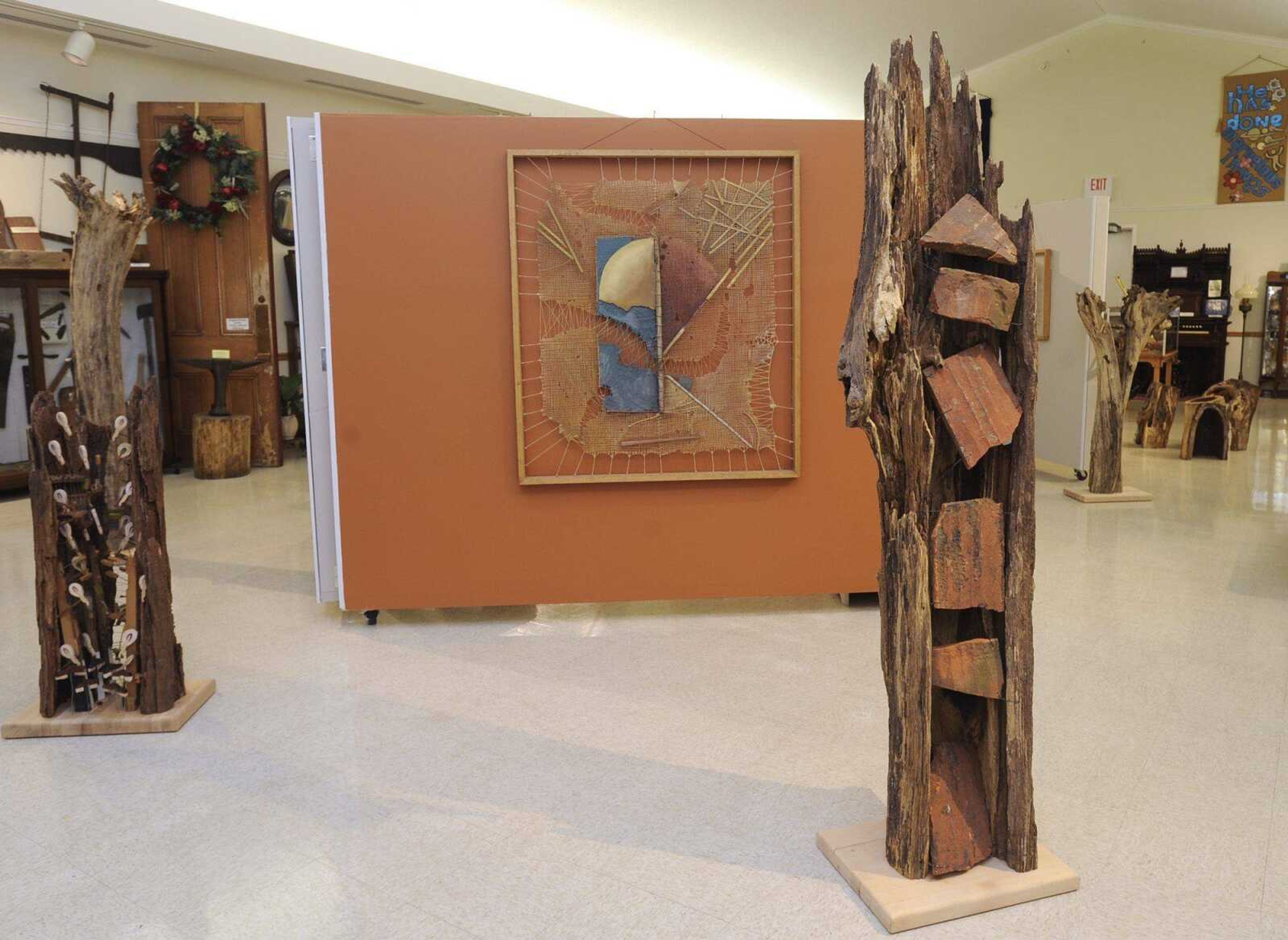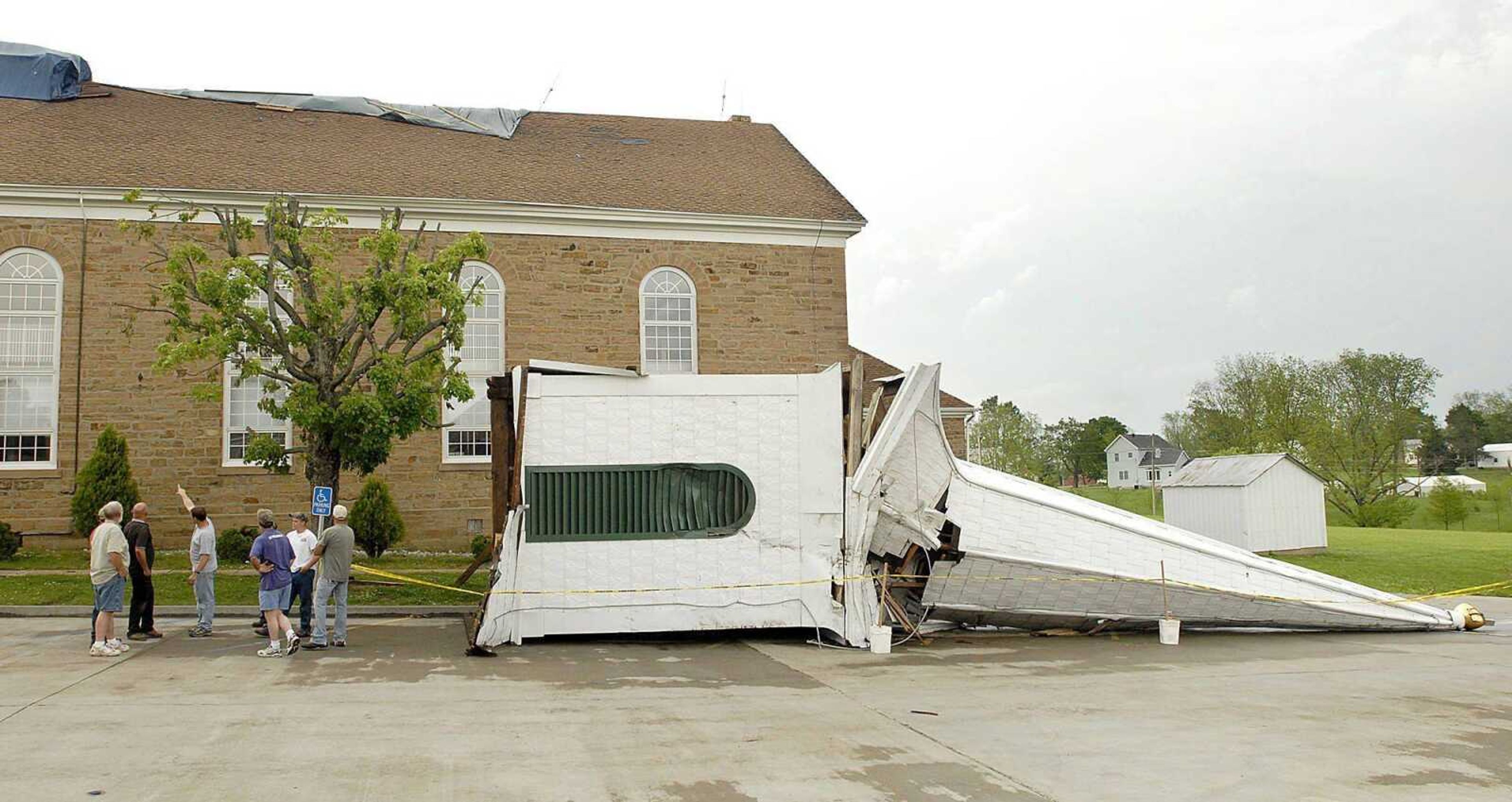Exhibit reflects pioneers of East Perry County
ALTENBURG, Mo -- The difficulty of settling East Perry County in the 1840s and the determination required of Lutheran immigrants from Saxony, Germany, to survive are revived in an exhibit on display through Nov. 7 at the Lutheran Heritage Center and Museum in Altenburg...
ALTENBURG, Mo -- The difficulty of settling East Perry County in the 1840s and the determination required of Lutheran immigrants from Saxony, Germany, to survive are revived in an exhibit on display through Nov. 7 at the Lutheran Heritage Center and Museum in Altenburg.
A descendant of settlers Johann Christian "Ziegel" Mueller and J.A.F.W. "Alphabet" Mueller, Minneapolis artist Kurt Mueller was inspired to create his "reVision: Recovery, Repair and Transformation" exhibition during a 2007 visit to the museum.
Using 6-foot splinters from the Trinity Lutheran Church steeple toppled by a 2009 windstorm and other historic materials, the Florissant, Missouri, native created 13 large sculptures, five smaller assemblages and 14 paintworks.
"All I knew for sure was that J.A.F.W. was considered the first graduate from a log cabin college that was still standing," Mueller wrote in an email.
"Because the log cabin school became Concordia Seminary and J.A.F.W. a Lutheran pastor, my family assumed some sort of special status within that culture.

"When I tracked down a copy of the out-of-print 'Zion on the Mississippi,' I was intrigued by the struggle for survival recounted in its pages and thrilled by the complex drama therein," Mueller said.
"Zion on the Mississippi," a book by Walter O. Forster, which is back in print, tells of the 1838 and 1839 Saxon emigration -- the 175th anniversary of which is being commemorated this year -- and subsequent settlement of East Perry County.
The fifth-generation descendant of that emigration "didn't set out to create a tribute, it evolved into that.
"I had been weaving my own painting 'canvas' for years, but (museum director) Carla Jordan reminded me that a significant number of the Saxon immigrants were weavers," Mueller wrote. "Everything I was interested in working on coalesced into a gestalt rooted in fragments deep inside me."
He said J.A.F.W. was the son of Ziegel Mueller, a tilemaker known as "The Tiler," some of whose probable clay roofing tiles were used in one of the sculptures. The show is sponsored in part by the Missouri Arts Council. Tangram Books published a 36-page book to illustrate and augment it.
Mueller said assistant curator Gerard Fiehler provided the long splinters of the steeple and a box of 50 hand-forged square nails, which inspired Mueller to acid-rust another 600 nails and impale the splinters with them to symbolize each settler.
"Kurt was looking for materials, and I said, 'I've got some stuff in the basement,'" said Fiehler. "He made that sculpture out of three pieces of the steeple.
"It's unusual for our area to have an exhibit like this. It's almost like abstract art," Fiehler said.
The artist said he thinks of his log sculptures "as living beings or at least imbued with some sort of spirit.
"I have a relationship or history with all the individual components used to create these pieces, a few of which took years to complete," Mueller said. "I couldn't force any of them to become something that it wasn't in their nature to be.
"Considering that they were once thriving organisms that probably lived longer on this earth than I have, I felt compelled to respect the potential hidden within each log."
Noting that he attended the exhibit's opening and a reception Oct. 4, Mueller said, "I get the feeling that people are taken aback at first because the pieces have a voice of their own, separate from mine.
"That can seem a little eerie at first, like remembering the voice of someone close who has been gone a while. Then it's reassuring or comforting. They're surprised to find this kind of art in a cultural museum. A few have cried. Some or all of the pieces stimulate conversation.
"I am particularly interested in the reactions from children. They seem fascinated, touching and running their fingers over the mysterious and alluring objects, discovering the text messages embedded in the surfaces. There are a lot of details.
"I'd like to think the reVision exhibition honors not only the pioneers who settled in Perry County but also the people who still live there, even if they aren't directly related to the Saxons. Altenburg was part of me, but now I'd like to believe I am part of Altenburg. I didn't become part of something small, I became part of a universe."
Connect with the Southeast Missourian Newsroom:
For corrections to this story or other insights for the editor, click here. To submit a letter to the editor, click here. To learn about the Southeast Missourian’s AI Policy, click here.










